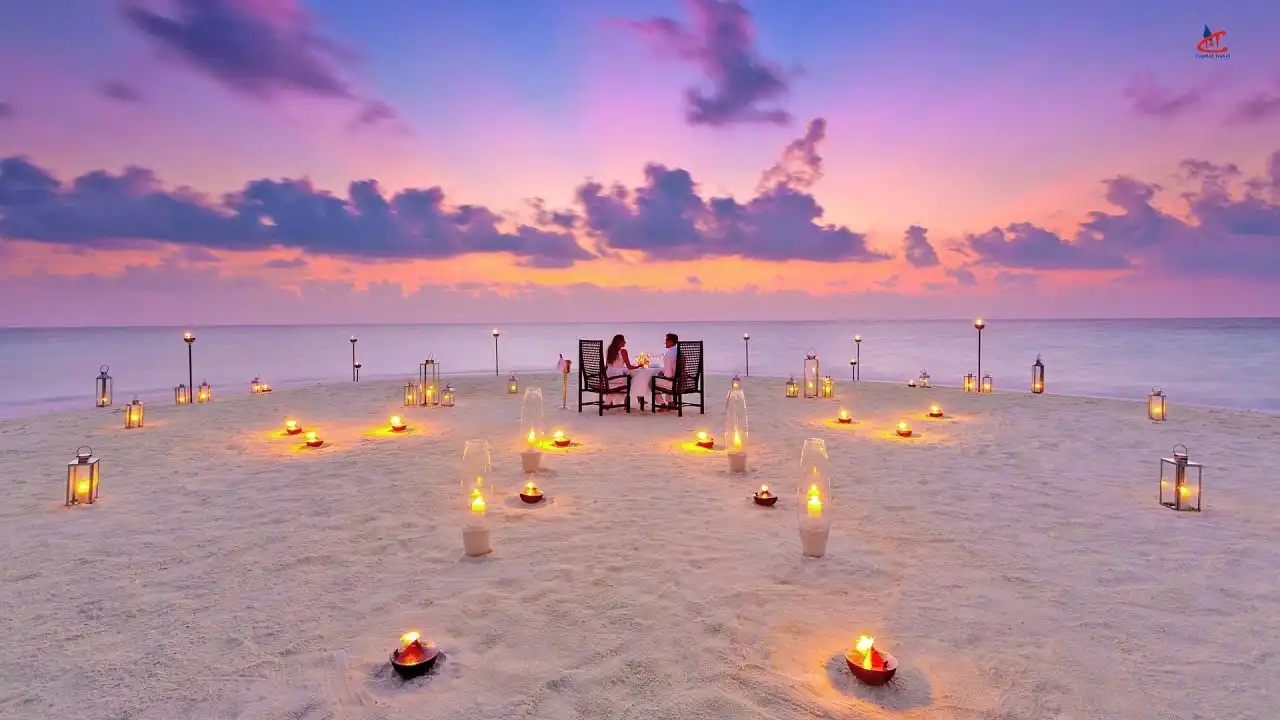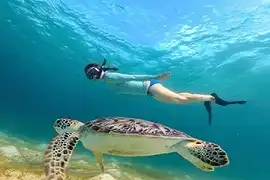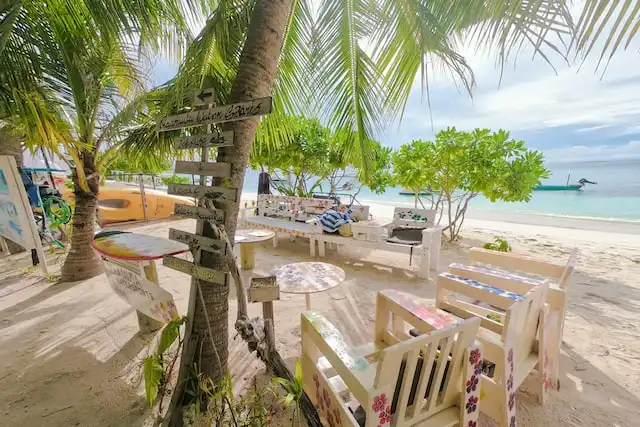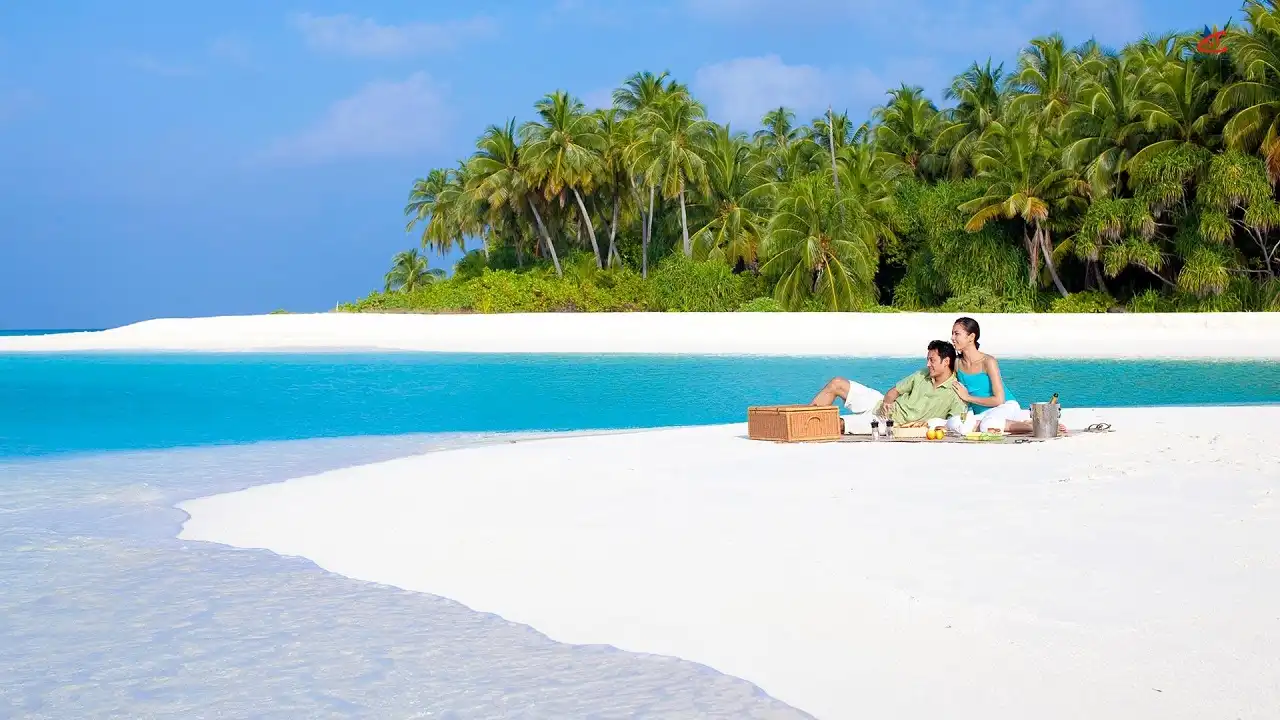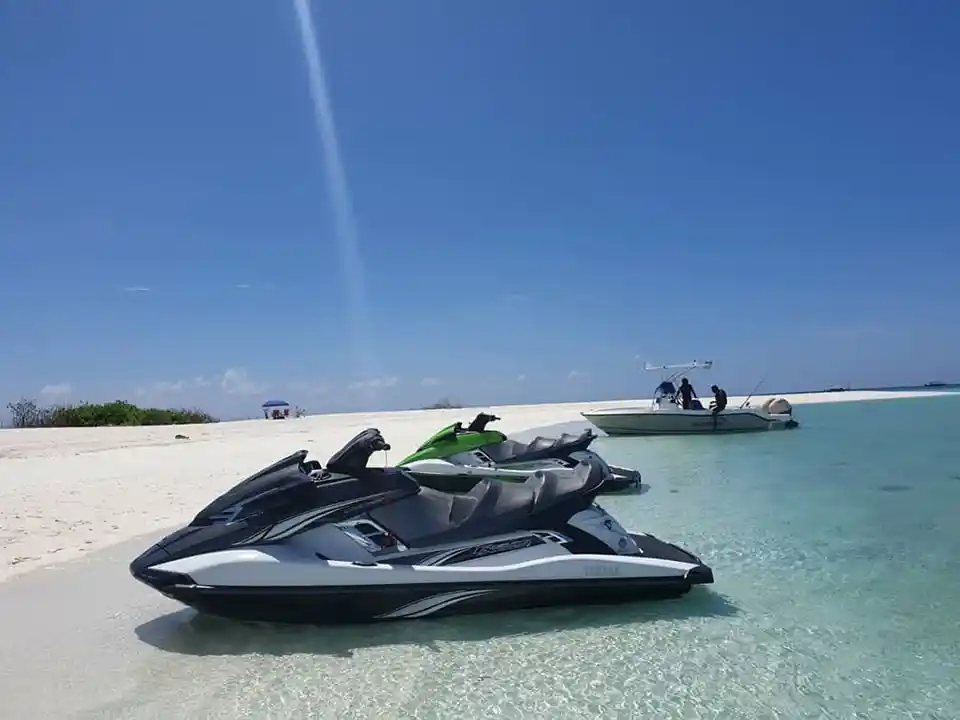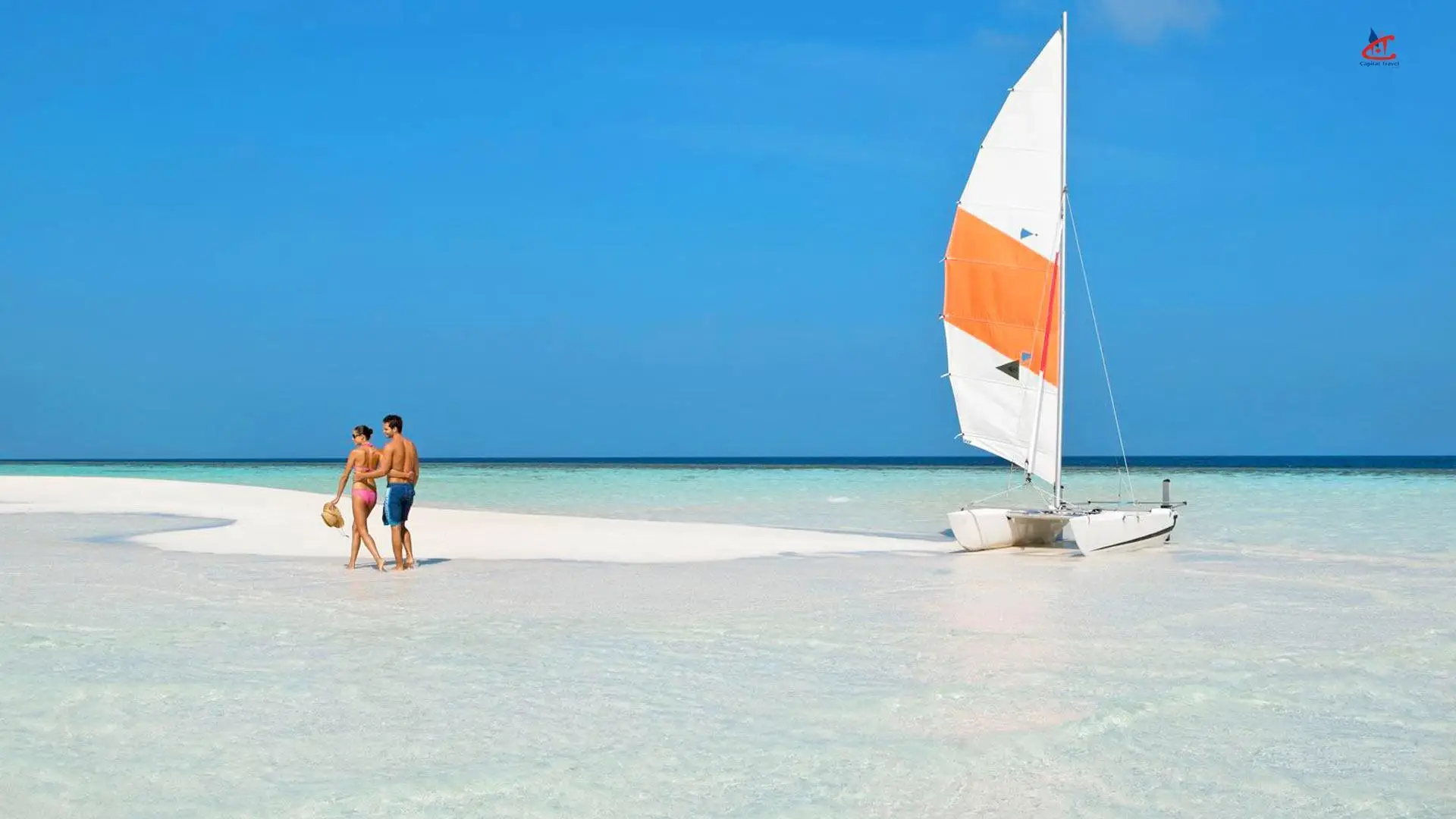
The Maldives is home to some of the world's most stunning beaches with powder-soft white sand and crystal-clear turquoise waters
The Maldives is synonymous with dream beaches—a place where reality surpasses imagination with stretches of powder-soft white sand, crystal-clear turquoise waters, and swaying palm trees. With over 1,190 islands scattered across 26 atolls, this island nation offers an abundance of beaches, each with its own unique charm and character. From vibrant house reefs teeming with marine life to secluded sandbanks that disappear at high tide, from bioluminescent shores that glow at night to beaches with overwater villas extending into the lagoon, the variety is astounding. This guide explores the 12 best beaches in the Maldives, showcasing the diverse coastal experiences that make this destination the ultimate beach paradise.
Video: Explore the most stunning beaches across the Maldives archipelago
The beaches of the Maldives stand apart from other world-famous beach destinations due to several unique characteristics:
The physical characteristics that create beach perfection:
Scientific Note: The white sand of Maldivian beaches is composed primarily of crushed coral and coralline algae, not quartz as found in many continental beaches.
The factors that enhance the beach experience:
Visitor Experience: The combination of these elements creates beaches that feel both pristine and comfortable, natural yet perfectly maintained.
Cocoa Island Beach represents the quintessential Maldivian beach fantasy—a perfect crescent of powder-soft white sand embracing a shallow, crystal-clear lagoon in graduated shades of blue. What makes this beach particularly special is its natural shape, which creates a protected swimming area with calm waters and excellent visibility.
The beach is complemented by COMO Cocoa Island's distinctive dhoni boat-shaped overwater villas that extend from one end of the crescent, creating a harmonious blend of natural and architectural beauty. The island's small size (just 350 meters long) means that the beach wraps almost entirely around the island, offering different perspectives and conditions throughout the day.
Landaa Giraavaru's beaches stand out not only for their pristine beauty but also for their location within the Baa Atoll UNESCO Biosphere Reserve, one of the world's most renowned marine environments. The island features multiple beaches, each with its own character, from the expansive main beach with its gently sloping entry to more secluded stretches around the island's perimeter.
What makes these beaches particularly special is the extraordinary marine life that surrounds them. The resort's location near Hanifaru Bay—famous for its manta ray and whale shark aggregations—means that some of the world's most spectacular marine encounters are just a short boat ride away. The Four Seasons has also established a significant marine conservation center on the island, contributing to the preservation of the surrounding ecosystem.
Baros is one of the Maldives' original luxury resorts, and its beaches reflect a mature, established beauty that newer islands can't replicate. The island's age means it features fully grown palm trees and lush vegetation that provide natural shade and frame the beaches perfectly. Unlike some newer, more manicured resorts, Baros maintains a natural feel with beaches that curve organically around the island.
What sets Baros' beaches apart is their romantic atmosphere. The resort has perfected the art of beach dining, offering everything from private breakfasts on a sandbank to elaborate dinners under the stars directly on the sand. The beaches are intimate rather than expansive, creating cozy nooks perfect for couples seeking privacy.
Dhigurah Island offers one of the most spectacular beach experiences in the Maldives that doesn't come with a luxury resort price tag. The name "Dhigurah" means "long island" in Dhivehi, and it lives up to this name with a stunning sandbank that extends approximately 3 kilometers from the southern end of the island. This natural formation creates one of the longest continuous beaches in the Maldives.
What makes Dhigurah's beach particularly special is the combination of accessibility and natural beauty. As a local inhabited island with guesthouses and small hotels, it offers a more affordable way to experience the Maldives' legendary beaches. The island has designated "bikini beaches" where tourists can wear Western swimwear, while still respecting local customs in the village areas.
Fulhadhoo represents one of the Maldives' best-kept secrets—a local island with a tiny population (around 250 residents) and beaches that rival or exceed those of luxury resorts. What makes Fulhadhoo's beaches special is their pristine, undeveloped nature combined with the island's relative obscurity, which means you might have entire stretches of perfect beach entirely to yourself.
The island features multiple beaches, including a spectacular sandbank on its southern end. Unlike more developed local islands, Fulhadhoo's beaches remain largely untouched, with natural vegetation coming right up to the shoreline and minimal infrastructure. The beaches here offer a glimpse of what the Maldives looked like before tourism development.
Veligandu Sandbank offers perhaps the purest expression of a Maldivian beach—a slender strip of brilliant white sand surrounded by nothing but crystal-clear waters in every direction. Unlike island beaches, this sandbank stands alone in the lagoon, creating a surreal experience of being surrounded by water while standing on solid ground.
What makes this sandbank particularly special is its ephemeral nature. The shape and size change with the tides and seasons, sometimes appearing as a long, narrow strip and other times as a more rounded formation. At high tide, portions may disappear underwater entirely, adding to the magical quality of the experience.
Vaadhoo Island's beach offers one of the most magical natural phenomena in the Maldives—bioluminescent plankton that create what locals call the "Sea of Stars." While the beach is beautiful during the day, it transforms after dark when waves washing ashore contain microscopic organisms called dinoflagellates that emit blue light when disturbed by movement.
This natural light show creates the illusion of a mirror to the night sky, with glowing blue dots illuminating the shoreline and water. Walking along the beach leaves glowing footprints, and splashing in the shallows creates bursts of blue light, resulting in an almost otherworldly experience that feels like something from a fantasy film.
The beaches of the Maldives can be categorized in several ways, each offering distinct experiences:
Characteristics:
Best For: Luxury experiences, honeymoons, convenience, and service
Notable Examples: Cocoa Island Beach, Baros Beach, Landaa Giraavaru Beach
Characteristics:
Best For: Budget travelers, cultural experiences, longer stays
Notable Examples: Dhigurah Beach, Fulhadhoo Beach, Maafushi Bikini Beach
Characteristics:
Best For: Day excursions, photography, complete seclusion
Notable Examples: Veligandu Sandbank, Finolhu Sandbank, Emboodhoo Finolhu
Characteristics:
Best For: Snorkelers, marine enthusiasts, active travelers
Notable Examples: Baros House Reef Beach, Angsana Ihuru Beach, Eriyadu Island Beach
Location: South Male Atoll (Local Island)
Maafushi's designated tourist beach represents the evolution of Maldivian tourism beyond luxury resorts. As one of the first local islands to embrace guesthouse tourism, Maafushi created a dedicated "bikini beach" where tourists can wear Western swimwear while respecting local customs elsewhere on the island.
While smaller and more developed than some beaches on this list, Maafushi's beach offers the same beautiful white sand and clear waters found at resorts, but at a fraction of the price. The beach is lined with affordable restaurants and water sports operators, making it a hub of activity.
Best For: Budget travelers, social atmosphere, convenience to Male
Location: North Male Atoll (Resort Island)
Angsana Ihuru is renowned for having one of the best house reefs in the Maldives, accessible directly from its beach. The small, circular island is surrounded by a vibrant coral reef just a few meters from shore, creating a perfect synergy between beach relaxation and underwater exploration.
The beach itself forms a perfect ring around the island, offering different conditions throughout the day as the sun moves. The island's small size means you're never more than a minute's walk from the ocean, creating an intimate connection with the marine environment.
Best For: Snorkelers, marine life enthusiasts, intimate island experience
Location: Baa Atoll (Resort Island)
Finolhu offers a different take on Maldivian beaches with its retro-chic beach club atmosphere. The main beach features a 1.8km sandbank stretching out from the island, but what makes it unique is the vibrant beach club culture that's rare in the typically tranquil Maldives.
With music, beach games, and a social atmosphere, Finolhu's beach offers a more energetic alternative to the serene isolation found elsewhere. The resort even has vintage-style beach buggies that transport guests along the extensive shoreline.
Best For: Social travelers, those seeking a beach club vibe, Instagram-worthy settings
Location: Lhaviyani Atoll (Resort Island)
As one of the largest resort islands in the Maldives, Kuredu offers an extensive beach experience with multiple distinct beach areas. The island's size (1800 meters long) means you can always find a quiet spot, even when the resort is at full capacity.
What makes Kuredu's beaches special is their diversity—from the wide, shallow lagoon on the west side perfect for families, to the eastern beaches with their proximity to the house reef. The island also features a stunning sandbank at its northern tip.
Best For: Families, active travelers, those seeking variety in beach experiences
Location: North Ari Atoll (Local Island)
Thoddoo offers a unique beach experience as it's both a local inhabited island and an agricultural center known for growing fruits and vegetables. Unlike most Maldivian islands, Thoddoo features lush farms in its interior, creating a beautiful contrast with its pristine beaches.
The island's beaches are expansive and less developed than those on more touristic local islands like Maafushi. Thoddoo's relative isolation and agricultural focus have preserved its beaches in a more natural state, while still offering tourist facilities like guesthouses and designated bikini beaches.
Best For: Travelers seeking authenticity, agricultural tours combined with beach time
The Maldives has a tropical climate with two distinct seasons that affect beach conditions. The dry season (northeast monsoon) from December to April offers sunny days, minimal rain, and calm seas—ideal for beach activities and clear visibility for snorkeling. The wet season (southwest monsoon) from May to November features occasional rain showers and slightly rougher seas, but also lower prices and fewer crowds. For beach enthusiasts, the shoulder seasons (April-May and October-November) often provide the best balance of good weather, value, and less crowded beaches. Beach conditions can vary by atoll, with the eastern sides of atolls generally experiencing calmer conditions during the southwest monsoon and western sides being calmer during the northeast monsoon. For more details on timing your visit, check our guide on the best times to visit the Maldives.
Maldivian beaches are generally very safe, with few dangerous marine creatures. However, it's important to be aware of a few safety considerations. Coral reefs, while beautiful, can cause cuts and scrapes if stepped on—wear water shoes when exploring rocky areas. Some beaches have strong currents, particularly near channels (known locally as "kandu")—always observe warning flags and ask resort staff about safe swimming areas. While shark attacks are extremely rare in the Maldives, you may encounter reef sharks near beaches with house reefs—these are typically shy and not dangerous to humans. Stingrays sometimes visit shallow waters—shuffle your feet when walking in sandy shallows to alert them to your presence. Always apply reef-safe sunscreen, as the equatorial sun is intense even on cloudy days. For more information about marine life, visit our Maldives diving guide.
When visiting beaches on local inhabited islands, it's important to respect Maldivian cultural norms. The Maldives is a 100% Muslim country, and modest dress is expected on local islands. Tourists should use only designated "bikini beaches" for Western-style swimwear—these areas are clearly marked and set aside specifically for tourists. On other parts of local islands, both men and women should keep shoulders and knees covered. Public displays of affection should be avoided on local beaches. Alcohol is prohibited on local islands (though available at resorts), and bringing alcohol to local islands is illegal. Photography of local residents should be done with permission. Most local islands have designated waste disposal areas—use these facilities and avoid littering. These cultural considerations help maintain positive relationships between tourists and local communities while preserving the natural beauty of the beaches. For more insights into local culture, see our Maldives culture guide.
The beaches of the Maldives offer extraordinary photography opportunities, but capturing their true beauty requires some technique. The best lighting for beach photography is during the "golden hours" of early morning (6:00-7:30 AM) and late afternoon (5:30-7:00 PM), when the sun is lower and creates warm, flattering light. Mid-day sun creates harsh shadows and can wash out the vibrant colors of the water. For underwater photography near beaches, use a polarizing filter or underwater housing for your camera/phone. Drone photography offers spectacular perspectives of beaches and sandbanks, but check resort policies as many have restrictions on drone usage. For the popular "split-shot" showing above and below water simultaneously, specialized dome ports are available for smartphones. When photographing beaches with overwater villas, try including a villa in the frame to provide scale and context to the scene. Remember that the Maldives' beaches look different throughout the day as the light changes, so revisit the same locations at different times for varied results.
Yes, there are public beaches in the Maldives, but the concept differs from public beaches in most other countries. In the Maldives, beaches on local inhabited islands are accessible to visitors, but with important cultural considerations. Most popular tourist local islands like Maafushi, Dhigurah, Thulusdhoo, and Thoddoo have designated "bikini beaches" where tourists can wear Western swimwear. These areas are specifically set aside for tourists and are separate from the beaches used by locals. Outside these designated areas, visitors should respect local customs by dressing modestly (covering shoulders and knees). Unlike resort islands where the entire beach belongs to the resort, local island beaches are public spaces shared by residents and visitors. The capital city of Male has a man-made beach called Artificial Beach, which is a public recreational area popular with locals, especially in the evenings. Some local islands charge a small fee (typically $5-10) for beach access to help maintain facilities. Public beaches on local islands generally have fewer amenities than resort beaches, though popular tourist islands increasingly offer beach chairs, umbrellas, and water sports equipment for rent.
The extraordinarily white sand of Maldivian beaches is primarily composed of crushed coral and coralline algae, not quartz as found in many continental beaches. This composition gives Maldivian sand its distinctive bright white color and fine, powder-like texture. The process begins with parrotfish and other coral-grazing species that bite off pieces of coral while feeding on algae. These fish grind the coral with specialized teeth in their throats and excrete the undigested calcium carbonate as fine sand particles. A single parrotfish can produce hundreds of pounds of sand annually through this process. Over time, wave action further breaks down coral fragments and shells into smaller particles, creating the fine sand that accumulates on beaches. The sand's white color is due to the high calcium carbonate content, which reflects most wavelengths of light. The absence of rivers in the Maldives means there's no sediment runoff to mix with and darken the sand. Additionally, the isolation of the Maldives from continental landmasses prevents the introduction of darker minerals and organic materials found in many other beach destinations. This unique composition is why Maldivian sand stays cool even under the hot tropical sun—it reflects rather than absorbs heat, making it comfortable to walk on barefoot even at midday.
Choosing the best resort for beaches in the Maldives depends on your specific preferences, as different resorts offer different beach experiences. Consider these factors when making your selection: Island size significantly impacts beach experience—larger islands like Kuredu or Kuramathi offer extensive beaches where you can always find a private spot, while smaller islands like Baros or Cocoa Island provide more intimate beach settings. Beach width varies between resorts; some feature narrow strips of sand while others have wide, expansive beaches—review resort photos carefully, looking at beach chairs to gauge scale. Sand quality differs subtly; some islands have ultra-fine, powder-soft sand while others have slightly coarser sand—read recent guest reviews that specifically mention sand quality. Beach access from villas is an important consideration; beach villas offer direct access, while water villas typically require walking to the main beach areas. House reef proximity matters if you want to snorkel directly from the beach—resorts like Angsana Ihuru and Mirihi are known for excellent house reefs accessible from shore. Beach maintenance practices vary; some resorts maintain pristine, manicured beaches while others take a more natural approach with some seaweed or coral fragments. Beach facilities differ significantly; some offer extensive water sports, beach bars, and service, while others maintain a more untouched atmosphere. For the most accurate assessment, read recent guest reviews that specifically discuss beach conditions, as these can change seasonally and over time.
Unlike volcanic island destinations such as Hawaii or Iceland, the Maldives does not have true black sand beaches. The Maldives is formed from coral atolls rather than volcanic activity, resulting in predominantly white sand beaches throughout the archipelago. The white sand comes from crushed coral and coralline algae, giving it the characteristic bright, powder-soft appearance that the Maldives is famous for. However, a few islands in the Maldives do have small areas with darker sand, though not truly black. These darker patches typically occur where there's a higher concentration of organic material or where specific types of coral have influenced the sand composition. For example, parts of Vaadhoo Island (famous for its bioluminescent "Sea of Stars" phenomenon) have some darker sand areas. Some beaches may also appear darker when wet or in certain lighting conditions. If you're specifically interested in black sand beaches, you would need to visit volcanic island destinations instead. The Maldives' appeal lies in its pristine white sand beaches, which provide the perfect contrast to the multiple shades of blue in the surrounding waters. This white-sand-and-turquoise-water combination creates the iconic Maldivian beach aesthetic that has made these islands a dream destination for beach lovers worldwide.
With an average elevation of just 1.5 meters above sea level, the Maldives is particularly vulnerable to climate change and rising sea levels, which threaten its beaches and very existence. The Maldivian government and resorts are implementing various strategies to protect these precious coastal resources. Many resorts and islands have constructed sea walls, breakwaters, and groynes to combat erosion and protect beaches from wave action. These structures are increasingly being designed to work with natural processes rather than against them. Beach nourishment programs regularly replenish sand on eroding beaches, often using sand dredged from the lagoon floor in environmentally monitored operations. Coral reef restoration projects are crucial, as healthy reefs serve as natural breakwaters that protect beaches from erosion—many resorts have coral propagation programs where broken coral fragments are attached to frames and monitored as they grow. Mangrove restoration initiatives help stabilize coastlines and reduce erosion, with several islands replanting these important ecosystems. The Maldives has committed to becoming carbon-neutral by 2030, implementing renewable energy projects like solar installations at resorts and reducing dependence on diesel generators. Strict environmental regulations now govern new resort development, requiring environmental impact assessments and sustainable design. The government has also created the Maldives Climate Change Trust Fund to finance adaptation and mitigation projects. On a global scale, the Maldives has become an important voice in international climate negotiations, advocating for stronger emissions reductions worldwide. Despite these efforts, the long-term future of Maldivian beaches remains uncertain, making current conservation efforts all the more critical.
The beaches of the Maldives represent nature's perfection—places where crystal-clear waters meet powder-soft sand in a symphony of blues and whites. While they share certain characteristics that have made them world-famous, each beach has its own personality and charm, whether it's the vibrant house reef just offshore, the perfect crescent shape of the coastline, or the way the sun sets directly into the ocean at day's end.
The diversity of beach experiences available in the Maldives means there's a perfect stretch of sand for every type of traveler. Luxury seekers can enjoy the immaculate beaches of private resort islands, complete with attentive service and amenities. Budget travelers can experience similar natural beauty on local island beaches at a fraction of the cost. Adventure enthusiasts can discover uninhabited islands and sandbanks that offer a true castaway experience. And underwater lovers can find beaches with extraordinary house reefs just steps from shore.
What makes the beaches of the Maldives truly special goes beyond their physical beauty—it's the sense of tranquility and connection with nature they provide. In our increasingly busy world, these beaches offer rare spaces where time seems to slow down, where the natural rhythm of tides and sunsets replaces the artificial pace of modern life.
Whether you're seeking a romantic honeymoon setting, a family-friendly beach vacation, or a solo adventure to reconnect with nature, the beaches of the Maldives offer an experience that lives up to—and often exceeds—the dream. The only challenge is choosing which of these paradise shores to visit first.
For more information about planning your perfect Maldives beach vacation, explore our guides on Maldives resorts, activities, and beautiful places in the Maldives.

